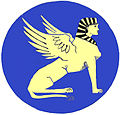History
Created on 1 August 1918, it was organized at Luxeuil-les-Bains Aerodrome, France with the 99th and 104th Aero Squadrons on 7 August. At the time of organization, the 99th was conducting a liaison school with infantry units at which place the 104th Squadron reported, but due to a lack of equipment and officer personnel, no combat operations took place. [1]
On 7 September the group moved to Souilly Aerodrome in preparation for the St. Mihiel Offensive. At Souilly, the 88th Aero Squadron was assigned on 15 September. Again moved to Foucaucourt Aerodrome on 20 September in preparation for the Meuse-Argonne offensive. In addition, the 1st Air Park was assigned to the Group for repair work and transportation support. [1]
During the period 20 October – 1 November, the weather conditions were very poor. Observation patrols over the enemy lines were very difficult due to the poor visibility, and direct observation yielded very little useful information. Clearing weather on 2 November, extensive observation flights weer made of enemy positions, artillery locations, and enemy defensive organization in general. [1]
Lineage
- Organized in France as: V Corps Observation Group, 7 August 1918
- Demobilized in France on 15 February 1919 [1]
This page is based on this
Wikipedia article Text is available under the
CC BY-SA 4.0 license; additional terms may apply.
Images, videos and audio are available under their respective licenses.



